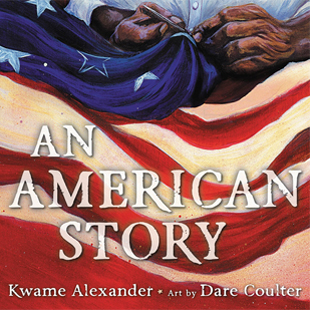This is a fiercely honest about the history of people ripped from their African homelands to work far across the Atlantic Ocean under brutal conditions with no pay. It does not hesitate to speak of the terror and horror of that experience, yet it also relays hope, courage, and resilience.
The way that this extremely difficult thread of history is made bearable for young people is by asking the very question that must now be on your mind: "How do you tell a story that starts in Africa and ends in horror?" As the story continues — of "big guns hiding in the night," waiting to steal people away and sell them in America — listening children's voices intervene. They ask honest questions: "They were scared and they didn't know where they were being taken?" Their teacher expresses raw, candid feelings: "I don't think I can continue. It's just too painful. I shouldn't have read this to you. I'm so sorry, children."
The effect is revelatory. No matter what our racial and cultural background, we come face to face with the human beings affected by being enslaved. We see the importance of "standing up and speaking out." And through children's voices we receive bracing doses of the inspiration that has allowed people to survive centuries of mistreatment:
Whenever I'm sad, my grandma sings me her favorite poem: "We've suffered, been battered, out lives have been scattered, but we're still here. And that's all that matters. We're still here."
New York Times bestselling author Kwame Alexander — who also gave us The Undefeated — wrote this story after it became apparent that his daughter's fourth-grade teacher was afraid of teaching slavery in the classroom, because she had never been taught how to convey this traumatic content. Alexander says in his closing note that this book "can help give us a way to speak the truth to children, so we can all stop being afraid, so we can start moving closer to our better selves."
Award-winning artist, muralist, and sculptor Dare Coulter spent weeks researching his illustrations, taking into account both the sadness and the inspiration of this story. He crafted clay sculptures, painted wood panels with acrylic and spray paint, and drew with charcoal on gessoed paper. The varied styles not only bring the story to life but also help us seamlessly transition from present-day children with their questions to the history being relayed.
If you're looking for a way to introduce slavery and the resilience of African Americans to readers ages four to eight, this would be an extraordinary opening. If you want to say "no" to the banning of books that teach history with honesty, compassion, and power, then reading and sharing this book would be a loving, hopeful way to start.
